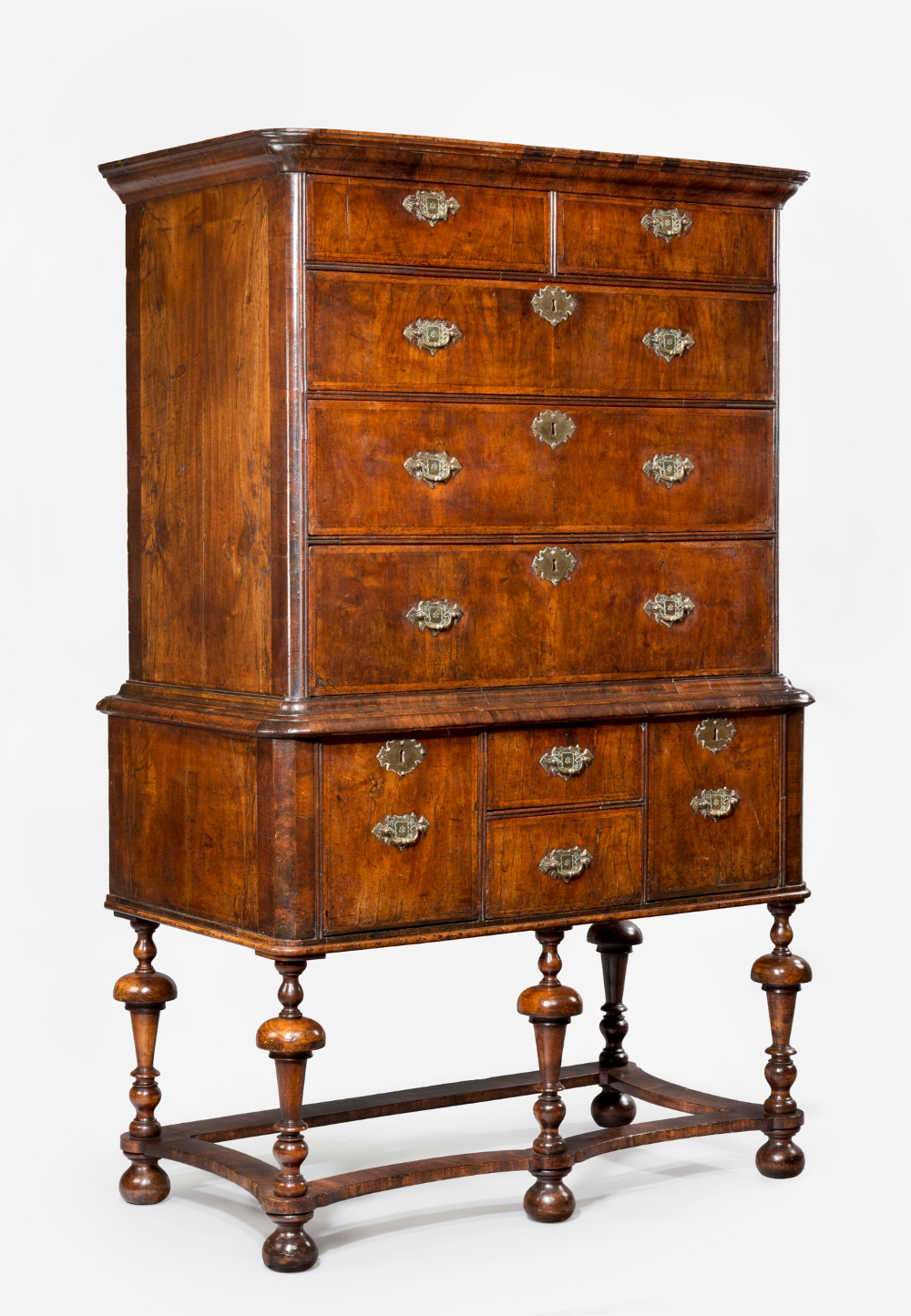
The Refined History and Legacy of the Georgian Era
Elegant, sophisticated, and timeless – Georgian antiques embody the grandeur of a bygone era that continues to captivate collectors and enthusiasts today. Spanning over a century, from 1714 to 1837 and the reigns of King George I to William IV, the period was marked by cultural and artistic evolution that left an indelible mark on luxury items.
We deeply appreciate the historical significance of the Georgian era and the legacy its antiques carry. Whether it’s a delicate rose-cut diamond ring, a painting inspired by the European masters, or a silver tea set adorned with intricate patterns, each item holds a unique narrative of the past. These pieces not only reflect the tastes and trends of the Georgian period but also the skilled craftsmanship that made them enduring treasures.
When selling your Georgian antiques to us, you can rest assured that they will continue to be appreciated by collectors who value their unique beauty and historical importance. Read on to learn more about this fascinating time in British history and the styles it has brought about, or get in touch right away to schedule a free, no-obligation valuation with an expert.
What to Look for in Georgian Craftsmanship
When evaluating Georgian antiques, it’s important to understand the hallmarks of craftsmanship that define pieces from this era. At Burlingtons Ltd., we pride ourselves on our ability to identify genuine Georgian items and accurately assess their value. Here’s what to look for in jewellery, silverware, and fine art from the Georgian period.
Jewellery
- Handcrafted Workmanship: Georgian jewellery was meticulously handcrafted, meaning no two pieces are identical. Expect slight imperfections that highlight its artisanal nature.
- Rose-Cut Diamonds: Popular throughout the Georgian period, rose-cut diamonds were often set in closed-back settings with foil to enhance their sparkle.
- Coloured Gemstones: Emeralds, sapphires, garnets, and topaz were commonly used, often with foil-backed settings to enhance their colour.
- Nature-Inspired Motifs: Popular designs included leaves, flowers, birds, and acorns, symbolising prosperity and eternal love.
- Gold and Silver: Most jewellery from this period was crafted in gold or silver, often with less uniformity due to handmade processes.
Silverware
- Ornate Decoration: Georgian silverware is known for its elaborate decoration, including repoussé work, engraving, and chasing. These techniques added depth and detail to items such as tea sets, candlesticks, and trays.
- Hallmarks: A key feature in identifying authentic Georgian silverware is the presence of hallmarks. These marks indicate the maker, date, and place of origin, ensuring authenticity and traceability.
- High Craftsmanship Standards: Georgian silversmiths adhered to strict quality standards, resulting in durable, functional, and beautiful pieces.
- Functional and Decorative: Silverware from this period was both practical and decorative, reflecting the wealth and status of its owners.
Fine Art
- Portraiture: Georgian portraits often depicted members of the aristocracy or wealthy patrons, reflecting their status and wealth. The attention to detail in clothing and facial expressions is a hallmark of this art form.
- Neoclassical Themes: Fine art from the Georgian period often features classical themes and mythological subjects, influenced by the neoclassical movement.
- Landscapes and Seascapes: Later in the Georgian period, landscapes and seascapes became popular, reflecting the Romantic movement’s focus on nature and emotion.
- Caricatures: The rise of political and social satire during the Regency period led to the popularity of caricature art, often used to comment on contemporary events and figures.
The Georgian Era at a Glance: Key Periods and Styles
The Georgian era witnessed significant changes in art, culture, and craftsmanship. From jewellery to silverware and fine art, each phase of this period reflects distinct styles and influences that continue to captivate collectors today.
Early Georgian (1714-1760)
The Early Georgian period was heavily influenced by the opulence of Baroque and Rococo styles, characterised by grandeur, intricate details, and bold ornamentation.
Jewellery:
- Jewellery from this period often featured gold, garnets, and intricate filigree work.
- Pieces were handcrafted with great attention to detail, making each item unique.
- Popular motifs included nature-inspired designs, such as flowers and leaves, as well as religious symbols.
Silverware:
- Early Georgian silverware was known for its elaborate designs and high craftsmanship standards.
- Common items included tea sets, candlesticks, and decorative trays.
- Silver items were often engraved with ornate patterns and family crests, reflecting the status of their owners.
Fine Art:
- Early Georgian art was influenced by European masters, particularly from Italy and the Netherlands.
- Portraits were a popular commission, often depicting the wealth and status of the sitter.
- Landscapes and historical scenes also became prominent, reflecting the growing interest in nature and classical antiquity.
Mid-Georgian (1760-1811)
The Mid-Georgian period saw the rise of neoclassical design, inspired by ancient Rome and Greece. This phase is characterised by more refined and symmetrical designs, with a focus on elegance and simplicity.
Jewellery:
- Cameos became highly fashionable, often depicting mythological scenes or classical figures.
- Paste stones (glass imitations of precious gems) were widely used, making jewellery more accessible.
- Mourning jewellery, created to commemorate loved ones, became popular, often incorporating hair or miniature portraits.
Silverware:
- Neoclassical silverware featured cleaner lines and more restrained decoration compared to the earlier period.
- Common items included coffee pots, sugar bowls, and serving dishes, often adorned with Greek-inspired motifs such as laurel wreaths and urns.
- Hallmarks became an important way to identify the maker and verify the authenticity of silver items.
Fine Art:
- The neoclassical movement greatly influenced paintings, with artists drawing inspiration from classical mythology and history.
- Portraits remained popular, but there was a shift towards more naturalistic and less formal depictions.
- The Grand Tour became a rite of passage for wealthy young men, resulting in a growing collection of classical art and artefacts in British homes.
Late Georgian (1811-1837)
The Late Georgian period, which includes the time known as the Regency period, was marked by bold, elaborate designs influenced by French Empire styles. This phase saw the rise of more accessible luxury items, making things like fine jewellery and silverware attainable for a broader audience.
Jewellery:
- Jewellery designs became more elaborate, featuring bold colours and exotic gems such as emeralds, sapphires, and topaz.
- The use of mixed metals and innovative techniques, such as foiling behind gemstones to enhance their colour, became popular.
- Snake motifs symbolising eternal love and acorns representing prosperity were common themes.
Silverware:
- Regency silverware was more decorative and ornate, often featuring intricate repoussé work (a technique where the metal is shaped by hammering from the reverse side).
- Popular items included serving platters, wine coolers, and tea caddies, often with detailed embellishments.
- The use of silver became more widespread, with items produced for both functional and decorative purposes.
Fine Art:
- Late Georgian art saw a shift towards Romanticism, with artists exploring themes of emotion, nature, and the sublime.
- Portraits continued to be in demand, but landscapes and seascapes gained popularity.
- The Regency period also saw the rise of caricature art, reflecting the political and social commentary of the time.
Competitive prices with immediate payment
Our team is looking for a huge range of Georgian items


The Legacy of Georgian Design and Why It Matters
Timeless Appeal
The elegance and sophistication of Georgian aesthetics make them as desirable now as they were in the 18th and early 19th centuries. Jewellery featuring delicate motifs and silverware adorned with intricate patterns remain popular choices for collectors and interior designers alike. These pieces seamlessly fit into both modern and traditional interiors, making them versatile and enduringly stylish.
Georgian art, too, retains its appeal, with portraits, landscapes, and neoclassical themes continuing to inspire contemporary artists and collectors. The balance of beauty and craftsmanship in Georgian pieces ensures that they never go out of style.
Cultural Significance
The Georgian era was a time of significant political, social, and artistic transformation. The period saw Britain emerge as a global power, with developments in science, architecture, and the arts leaving a lasting legacy. Georgian antiques offer a window into this dynamic era, capturing the tastes and values of the time.
Owning a Georgian piece is like having a tangible reminder of an era that shaped modern Britain. Collectors value these items not just for their aesthetic appeal but for the stories they tell about society, culture, and craftsmanship during a pivotal period in history.
Help Preserve the Past and Shape Your Future
When you sell your Georgian jewellery, silverware, or fine art through Burlingtons Ltd., you can be confident that these items will find new homes with collectors who appreciate their unique beauty and cultural importance.
Contact us today and let’s discuss your Georgian pieces; our team will be glad to book you in for a valuation that suits your needs, anywhere in the UK.
Find the true value of your Georgian jewellery, art, and silverware
Speedy home valuations and immediate payments